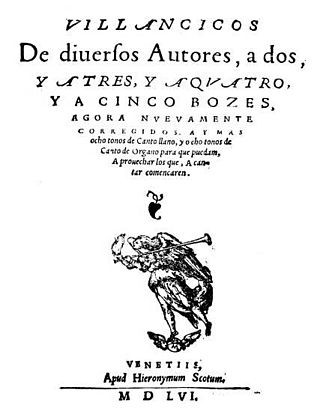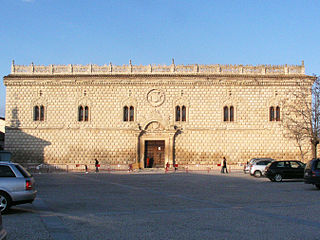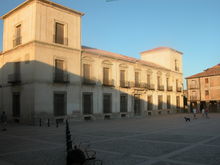
In Spain, music has a long history. It has played an important role in the development of Western music, and has greatly influenced Latin American music. Spanish music is often associated with traditional styles such as flamenco and classical guitar. While these forms of music are common, there are many different traditional musical and dance styles across the regions. For example, music from the north-west regions is heavily reliant on bagpipes, the jota is widespread in the centre and north of the country, and flamenco originated in the south. Spanish music played a notable part in the early developments of western classical music, from the 15th through the early 17th century. The breadth of musical innovation can be seen in composers like Tomás Luis de Victoria, styles like the zarzuela of Spanish opera, the ballet of Manuel de Falla, and the classical guitar music of Francisco Tárrega. Nowadays, in Spain as elsewhere, the different styles of commercial popular music are dominant.

Antonio de Cabezón was a Spanish Renaissance composer and organist. Blind from childhood, he quickly rose to prominence as a performer and was eventually employed by the royal family. He was among the most important composers of his time and the first major Iberian keyboard composer.
Juan Pérez de Gijón was a Spanish composer of the Renaissance.
This article concerns poetry in Spain.
A chansonnier is a manuscript or printed book which contains a collection of chansons, or polyphonic and monophonic settings of songs, hence literally "song-books"; however, some manuscripts are called chansonniers even though they preserve the text but not the music, for example, the Cancioneiro da Vaticana and Cancioneiro da Biblioteca Nacional, which contain the bulk of Galician-Portuguese lyrics.

Juan del Encina was a composer, poet, priest, and playwright, often credited as the joint-father of Spanish drama, alongside Gil Vicente. His birth name was Juan de Fermoselle. He spelled his name Enzina, but this is not a significant difference; it is two spellings of the same sound, in a time when "correct spelling" as we know it barely existed.
Juan Blas de Castro was a Spanish singer, musician, and composer.

The Cancionero de Upsala [sic], also known by the titles Cancionero del Duque de Calabria and Cancionero de Venecia, is a volume of mostly anonymous Spanish music printed in Venice in 1556. Its actual title is Villancicos de diversos Autores, a dos, y a tres, y a quatro, y a cinco bozes, agora nuevamente corregidos. Ay mas ocho tonos de Canto llano, y ocho tonos de Canto de Organo para que puedan aprovechar los que A cantar començaren. Venetiis, Apud Hieronymum Scotum, MDLVI. It survives in a unique copy at the Uppsala University Library and was edited in 1909 by Rafael Mitjana; the subsequent literature has mostly adopted his spelling "Upsala". A facsimile was first published by Alamire and later by the Biblioteca Valenciana.
Mateo Flecha was a Catalan composer born in Kingdom of Aragon, in the region of Prades. He is sometimes known as "El Viejo" to distinguish him from his nephew, Mateo Flecha "El Joven", also a composer of madrigals. "El Viejo" is best known for his ensaladas, published in Prague in 1581 by the same nephew.

The Cancionero de Palacio, or Cancionero Musical de Palacio (CMP), also known as Cancionero de Barbieri, is a Spanish manuscript of Renaissance music. The works in it were compiled during a time span of around 40 years, from the mid-1470s until the beginning of the 16th century, approximately coinciding with the reign of the Catholic Monarchs.
Ríu Ríu Chíu, sometimes shortened to Ríu Ríu or Ríu Chíu, is a Spanish villancico that has attained some contemporary fame as a Christmas carol.
The ensalada is a genre of polyphonic secular music mixing languages and dialects and nonsensical quodlibets.
Juan de Triana was a Spanish composer of the Renaissance period, active in the second half of the 15th century during the reign of the Catholic Monarchs. Pope Sixtus IV issued a bull on 9 February 1478 that listed De Triana as Prebendary of the Cathedral of Sevilla for at least a year before. He later moved to the Cathedral of Toledo, where it was recorded that in 1483 he was a teacher of six children in the Cathedral, with a salary of 18,000 maravedíes, a significant quantity at the time. Possibly Triana held this position until 1490, when he was replaced by Pedro de Lagarto. He died in Seville on 28 January 1494, and was buried near the gate of the chapel of the Virgen de la Antigua. In his will, he left a bequest to endow a chaplaincy to sing twenty-five masses a month for his soul at the altar of San Juan Bautista, near his place of burial.

The commonly called Palace of the Dukes of Medinaceli is a Renaissance palace located in Cogolludo, Spain, and is one of the most ancient sites of the region.
The Cancionero de la Colombina or Cancionero Musical de la Colombina (CMC) is a Spanish manuscript containing Renaissance music from the second half of the 15th century.
Pedro de Lagarto was a Spanish singer and composer of the Renaissance period.
The Cancionero de Turin or Cancionero Musical de Turin is a musical manuscript that contains Spanish secular polyphonic works from the period between the end of the 16th century and the beginning of the 17th century, in the transition period between the Renaissance and the Baroque eras.
The Cancionero de Segovia or Cancionero Musical de Segovia (CMS), also known as Cancionero of the Segovia Cathedral, is a manuscript containing Renaissance music from the end of the 15th century and beginning of the 16th century. It contains a wide repertoire of works by mainly Spanish, French and Franco-Flemish composers. It is kept at the Segovia Cathedral Archives.

The Hospital de Tavera, also known as the Hospital de San Juan Bautista, Hospital de afuera, or simply as Hospital Tavera, is an important building of Renaissance architecture located is in the Spanish city of Toledo. It was built between 1541 and 1603 by order of the Cardinal Tavera. This hospital is dedicated to John the Baptist and also served as pantheon for its patron, Cardinal Tavera. Initially it began to be constructed under the supervision of Alonso de Covarrubias, being succeeded by other architects, with Bartolomé Bustamante finishing the work.
Ángel Manuel Olmos is a Spanish musicologist and entrepreneur. He was music technology and history professor at the University of La Rioja, Honorary Research Fellow at the University of Liverpool and is currently Professor of Musicology at the RCSMM.







